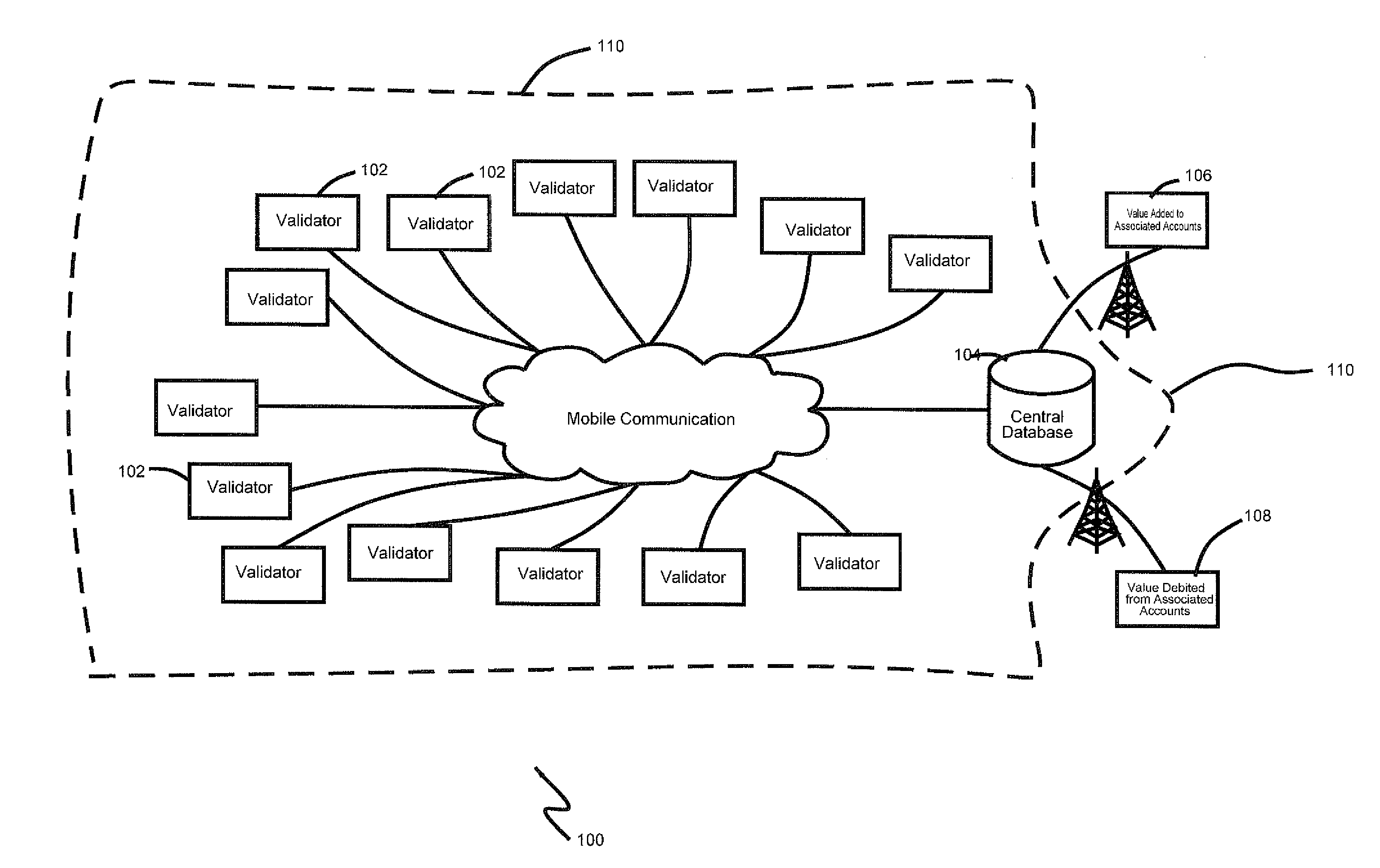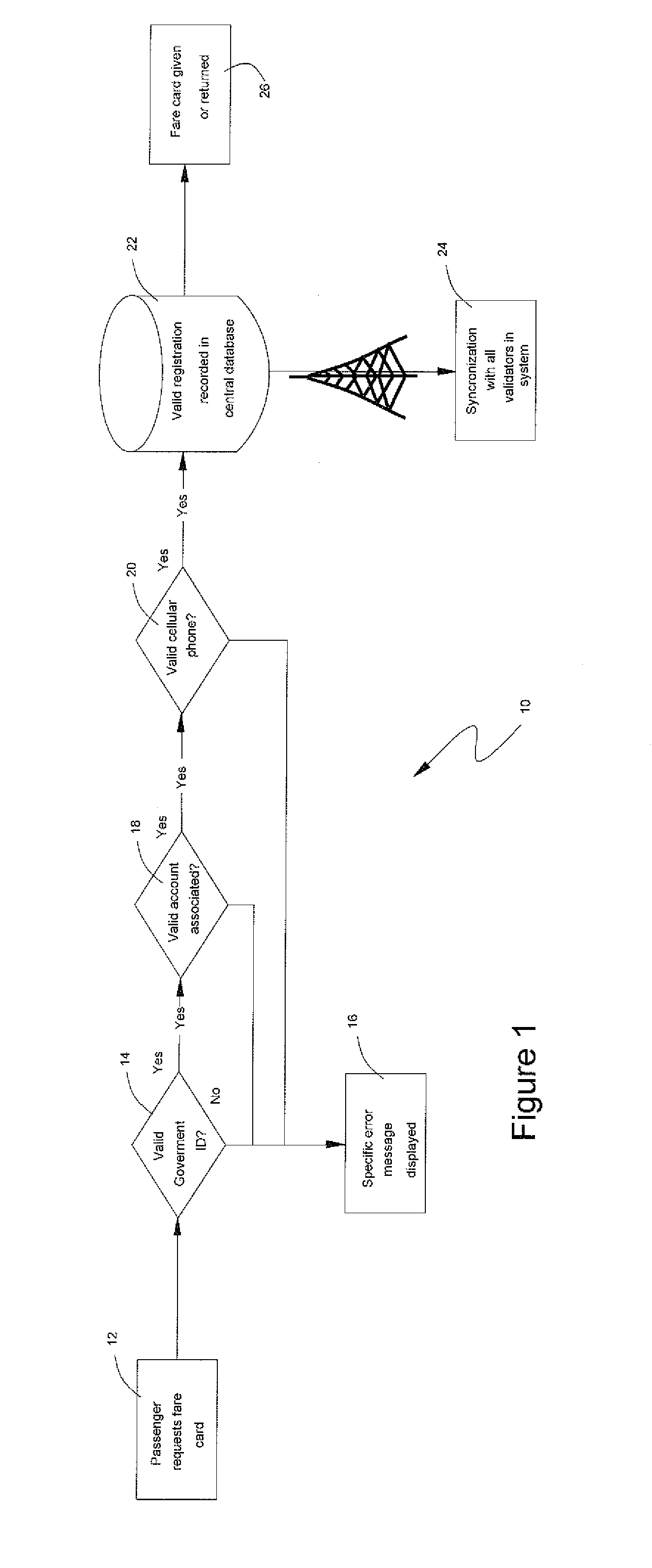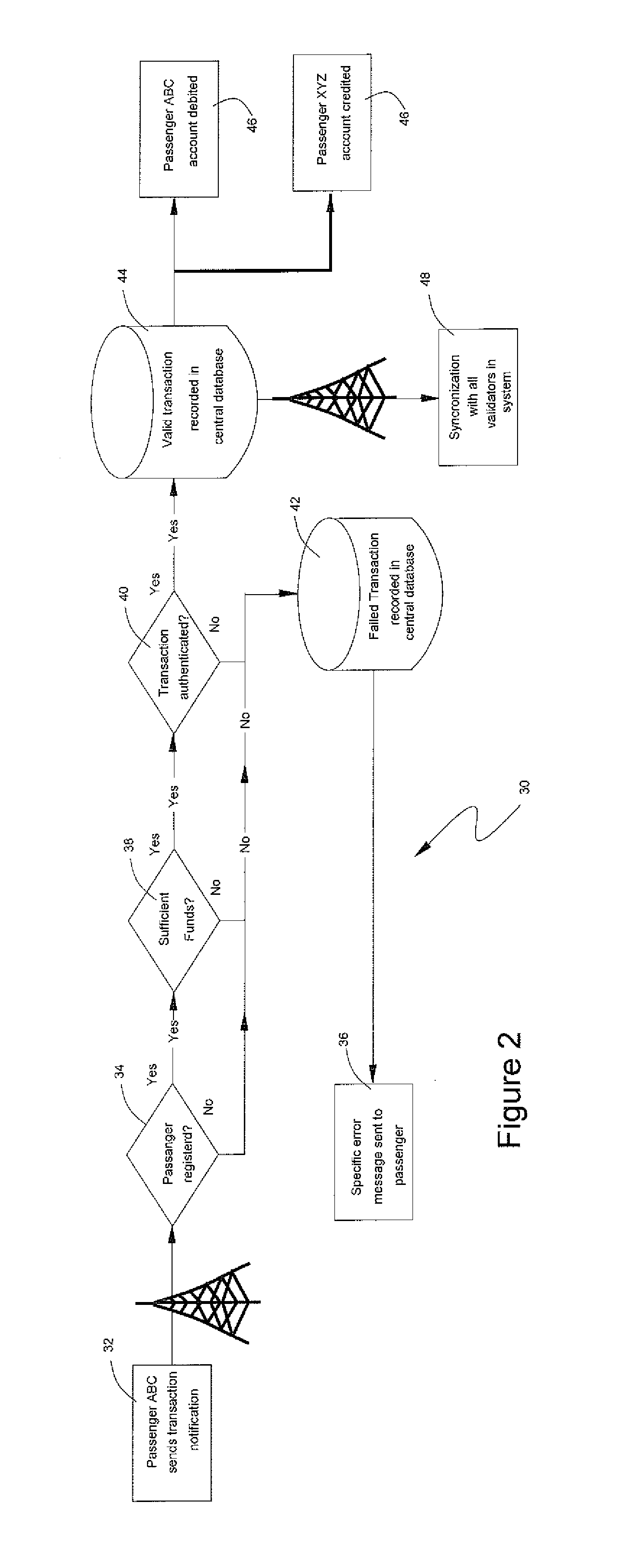Transit fare collection system
a technology of automated fare collection and transit terminal, which is applied in the direction of ticket-issuers, instruments, computing, etc., can solve the problems of burdening passengers, system strain on associated transportation terminals, and inability to store value fare cards
- Summary
- Abstract
- Description
- Claims
- Application Information
AI Technical Summary
Benefits of technology
Problems solved by technology
Method used
Image
Examples
Embodiment Construction
[0095]In accordance with the present invention, it is possible for a passenger to access funds from a mobile money account, bank account, credit card or prepaid card associated to a fare card in real time, without the need to visit an add value machine, with a cellular phone or on an internet site; or to receive value on his fare card account from any other person in real time, all as every validator and every fare card in the automated fare collection system is linked with the central database and all transactions are carried out therein in real time. Using the process illustrated in FIG. 1, a passenger ABC may obtain a fare card or register a pre-existing fare card and associate it to a mobile money account, bank account, credit card or prepaid card. In accordance with the preferred embodiment, passengers may associate their cellular phones and government issued identification to their fare card, however, neither is necessary for implementation of the invention.
[0096]While it is c...
PUM
 Login to View More
Login to View More Abstract
Description
Claims
Application Information
 Login to View More
Login to View More - R&D
- Intellectual Property
- Life Sciences
- Materials
- Tech Scout
- Unparalleled Data Quality
- Higher Quality Content
- 60% Fewer Hallucinations
Browse by: Latest US Patents, China's latest patents, Technical Efficacy Thesaurus, Application Domain, Technology Topic, Popular Technical Reports.
© 2025 PatSnap. All rights reserved.Legal|Privacy policy|Modern Slavery Act Transparency Statement|Sitemap|About US| Contact US: help@patsnap.com



